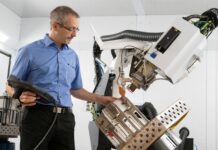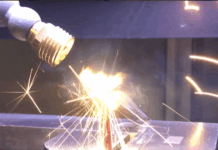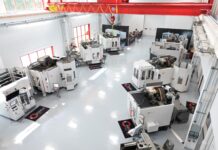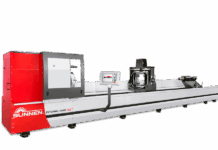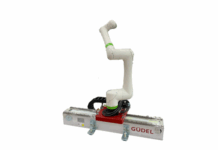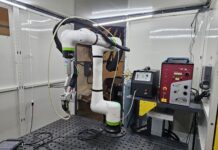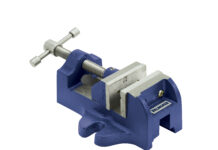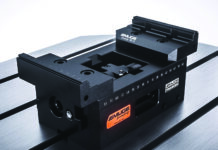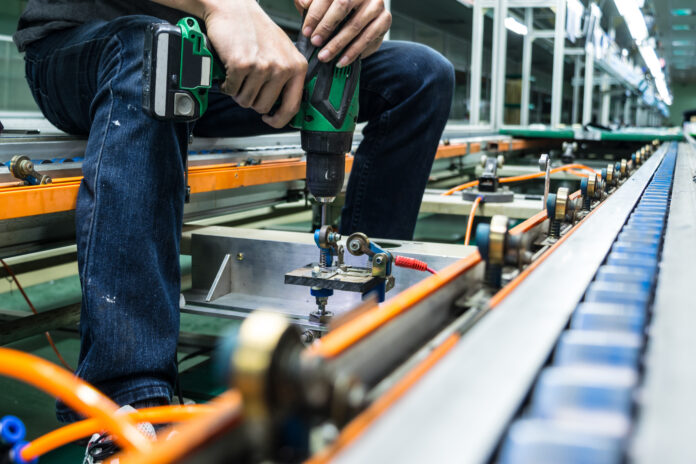Predictive maintenance is the new solution to an old problem – what I call the “Maintenance Tradeoff.” For many companies in manufacturing and machinery it is a first step towards a smart factory in their journey of digital transformation. To understand the business rationale, three questions need to be answered — what is predictive maintenance, what are the advantages, and what needs to be considered when it comes to its implementation?
The Maintenance Tradeoff
Maintenance has always been a tradeoff. Overdoing it results in unnecessary maintenance, too long production downtime and in the end avoidable costs. Underdoing it leads to premature machine damage, high error rates, quality variations, reduced machine lifetime and in the end avoidable costs. Whatever path is chosen, chances are good that it results in significant avoidable expenses. No wonder, maintenance is a classical starting point for efficiency initiatives. Typically, they go something like this: Some board member pops the question. Then the board summons the chief management accountant, aka “the controlling guy”. But in this very mission, the only thing the poor bloke could do is to confirm what everyone around the table already knows. The two truths of maintenance: Yes, between overdoing it and underdoing it there is theoretically an optimum. And no, controlling cannot predict it precisely. Not even close. Not enough data. No method to do it. And this is where such well-intended initiatives have traditionally ended quickly in severe board frustration. But then, digital transformation kicks in. It comes with the most unexpected of developments. Controlling guy made himself some new friends. And he brings them along when the board checks in about “that maintenance thing” again. They listen to the names of Data Scientist and Sensor Technology Expert. They bring along good news. There is a new solution to the old problem. Works like a charm. And they know how to do the magic. What’s their spell? Predictive maintenance!
What is Predictive Maintenance?
Predictive maintenance is an approach for optimizing maintenance operations according to condition forecasts which are based on advanced analytics of process data employing digital technologies and data science. In fact, it is an umbrella term used to describe a whole variety of methods. What they all have in common is that they are aimed at the prevention of malfunction, defect and failure while minimizing the maintenance effort. To achieve this, a combination of different technologies is used, which have emerged in the course of the digital transformation. Sensory technology helps with the gathering of real time data on machine function, production quality and surrounding conditions. Big data and cloud computing provide for the handling of the huge volumes of data collected by the sensors. Data science, machine learning and artificial intelligence enable the analysis of those enormous datasets and the discovery of suspicious patterns that are indicative of imminent malfunction. Decision support systems help managers to make the necessary decisions and dispositions to put information into action. Combined, all those technologies are set up to uncover early signals allowing to predict the risk of malfunction and thus assessing the need for maintenance. Predictive maintenance is primarily used for manufacturing machinery but could also be applied to other technical apparatus, buildings or human made artifacts.
What is Condition Monitoring?
Condition Monitoring is the systematic collection, aggregation, augmentation and descriptive analysis of data on the state of a machine or technical apparatus. It can be used to detect current malfunction or as a basis for the prognosis of future defects. Condition Monitoring is therefore a necessary first step of predictive maintenance. However, both have to be differentiated, as Condition Monitoring can also be applied in Reactive and Preventive Maintenance. Core element of Condition Monitoring is the data gathering. Sensors and other interfaces transfer information from the physical Entisphere into the Digital Infosphere. This is where the informational intertwining takes place, which is essential to turn machinery into Cyber-Physical Systems. As the step is crucial for the built of a smart factory its design should be aligned with other applications that can be based on the data.
The Advantages
Predictive maintenance is the solution to the Maintenance Tradeoff. Based on prospective analysis, it allows for a rational approach to determine timing, scope and organization of maintenance. Getting this right helps with minimizing downtime, increasing reliability, machine lifetime, productivity, production quality, worker safety and energy efficiency. Ultimately, it is an approach to reduce cost.
In principle, these advantages can materialize in comparison to all other approaches: Reactive Maintenance is performed only after malfunction has occurred. Basically being a euphemism for “repair”, it maximizes the risks of undergoing upkeep. Preventive Maintenance, on the other hand, aims to avoid the occurrence of malfunction. To achieve this maintenance is triggered based on schedule, utilization or condition. Time-based Maintenance is conducted strictly according to schedule, whether necessary or not. This bears the risk of overdoing upkeep with negative effects on cost and downtime. Usage-based Maintenance tries to handle the tradeoff assuming that malfunction is associated to the extent of machine utilization and triggers keep up accordingly. Utilization being only an indirect indicator, it can be inferior to actual condition monitoring employed in Predictive maintenance.
The Challenges
Implementation is the acid test for any idea. Conceptually, predictive maintenance is highly promising. But, unsurprisingly, implementation entertains entrepreneurs with all kinds of challenges and pitfalls. So, there are quite a few decisions to be made before one casts the spell. Let’s go over some of the managerial aspects.
Made to Measure
Every factory is different. Different products. Different workflows. Different machinery. Predictive maintenance needs to adapt to that. Hardly surprising, it is not a one-size-fits-all approach. It needs to be made-to-measure (pun not intended). This has implications for costs, design, planability and complexity of the implementation project. But luckily not everything has to be developed from scratch. There are solutions to build upon. However, it is not unlikely that external competences have to be brought on board to do that.
Optimizing Optimization
Trade in one tradeoff for another. That is a common nightmare for every decision maker. At a first glance, this seems to be an issue with predictive maintenance. It solves the maintenance tradeoff but it comes with another, the one of predictive optimization. Generally, the more data and the more sophisticated the analytics, the better the predictions. But that comes at a cost. However, the whole approach is about reducing cost in the first place. So, there is some balancing to be done. Optimizing the process of optimization. Luckily, there are multiple ways to handle this: Avoiding over-analysis, focusing on relevant decisions and increasing analytics efficiency.
Avoiding Over-Analysis
Everybody can tell when it is time to replace a toothbrush. That’s the definition of obvious. One might want to reserve the advanced analytics for the not-so-obvious. Or for decisions with a looming risk of intimidating magnitude. That’s generally good advice. And it applies to predictive maintenance for sure. Therefore, select potential use cases wisely. However, in a smart factory, where all the necessary data is available digitally anyway, this constraint dissolves.
Impact on Decision Making
Without impact on decision making, analytics are doomed to be irrelevant. For example, sometimes it is better to be absolutely safe than sorry. If a small machine is critical to a whole production line, one might be well advised to keep it in the very best of conditions. The potential for marginal savings will not shake this truth. No analytics needed, one could argue. That has been a classical counter-argument to predictive maintenance. However, it can be turned around. When one needs to be absolutely safe, the most advanced monitoring can be very valuable. Predictive maintenance may be of help.
Internal versus External
Business is about comparative competitive advantage. This should never be forgotten. Never ever. Efficiency is a key driver of comparative competitive advantage in the manufacturing industry. As machinery is a major cost factor and source of productivity, maintenance can have a significant impact on efficiency. Innovations like predictive maintenance are therefore of competitive importance. But, it is not about efficiency per se. It is about efficiency to attain comparative competitive advantage. Why emphasize this so much? Because there is a certain dilemma associated with this in predictive maintenance. A rule of thumb in machine learning says “more training data, better predictions”. That’s why machine builders and service providers might consider it a good idea to pool the data of various manufacturers to obtain better predictions for all. One can benefit from this. But the competitor can as well. Is that a good idea? Should it be done internally or externally? That’s a question one wants to ponder more than once. Sometimes, doing it in-house is beneficial. Sometimes, the answer might be: External cooperation is fine, because in some situations it is not about gaining comparative competitive advantage. It is about avoiding comparative competitive disadvantage. And rather often this very argument also applies to the whole endeavor of predictive maintenance per se. If others do it and one does not, then that’s often a straight shortcut towards comparative competitive disadvantage. Sounds like the fear of missing out? It is. And one should have it, at least when it comes to this type of innovation in business.
A Comprehensive Approach: Make it Part of the digital transformation
Predictive maintenance has been an early developer among the kids of digital transformation. The reason being simple: it is a self-contained use case for digital innovations. It can be implemented independently from other players in the value chain. And it does not challenge the established conditions, practices and workflows, let alone the logic of value creation. It’s the kind of change causing low resistance from employees, if any. But, as with all early developers, their lead diminishes as the other kids grow up too. Today and even more so in the future, a more comprehensive approach to digital transformation is necessary. Predictive maintenance needs to be thought of as one function of a fully digitalized smart factory besides many others. Going digital is envisaged to leverage manifold operational advantages. But its main benefits are of strategic nature. Their attainment should determine the overall concept. Therefore, go for a comprehensive approach to digital transformation. Be very much aware of its strategic significance. Consider the larger scheme of things first, and then make predictive maintenance a part of it.


